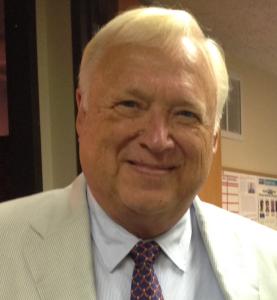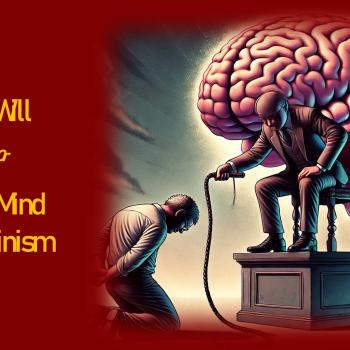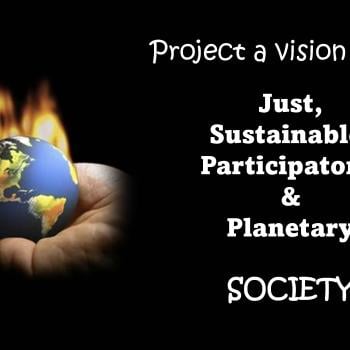Paul Lange on Abortion, Abortion 3
In a previous Patheos post, Are frozen embryos really children?, I made it clear that the Supreme Court of Alabama got it wrong. A morally protectable individual human life does not begin at conception. But when does it begin?
Here’s my question: when does the dignity of the unborn child become morally protectable, thereby proscribing abortion?

I want to ask Paul Lange. Paul is Professor and Chairman Emeritus in the Department of Urology at the University of Washington School of Medicine. If you keep up with this Patheos column, you may remember Paul Lange on Praying for a Miracle, Miracles 8. In the present post, it’s Paul Lange on abortion.
For a couple years now, Paul has invested considerable time and resources to investigate the history of abortion practices in the context of the social standing of woman. Historical evidence strongly suggests that draconian anti-abortion doctrines and policies can be correlated with the attempt to repress gender equity in support of patriarchal dominance.
As a medical doctor, Paul has the tools to trace embryological development in his search for nature’s own marker. What might nature herself say about the threshold prior to which the termination of a pregnancy would be licit? Paul identifies such a threshold at 20 to 24 weeks, when the cerebrum becomes neurologically connected.
An Interview: Paul Lange on Abortion
Ted. Paul, you affirm that a woman should be legally able to elect an abortion early in the pregnancy but not later. To what can you appeal embryologically to support this?

Paul. In medical school, we all learned the phrase “ontogeny recapitulates phylogeny”. While now that phrase is no longer considered true in the specifics, it is still true in concept. Thus, in evolution humankind did not just appear but evolved from the ape and lower forms. Thus also, it is more true than not, that the zygote isn’t suddenly a human but evolves albeit only approximately through stages common to lower forms before it achieves “humanness.” And that event occurs, in my opinion, somewhere between 20 and 24 weeks (i.e. when the cerebrum becomes connected neurologically). Yes, a fertilized human egg is nothing other than a human egg but only a “potential” human. It’s only later in embryogenesis that it becomes more uniquely human approaching, but never totally achieving, the “humanness” of its mother.
Ted. In medieval times, it was widely believed that morally protectable dignity applied to the unborn child at quickening, when the mother could detect movement in her womb. Quickening was said to be the point where God imparted a soul to the body. Muslims dated ensoulment at the 4th day after conception for boys and the 120th day for girls. St. Thomas Aquinas put it a the 40th day for boys and 80th day for girls. In 1591, Pope Gregory XIV determined ensoulment took place at 166 days of pregnancy, almost 24 weeks. Currently, this is the current legal limit for abortion in the UK. Where does this fit in your assessment?
Paul. Let me add a few other observations. I think the reason that abortion was considered only a major sin late in pregnancy by the Roman Catholic Church (i.e., after quickening or even later up to 160 days) was due to the doctrine that infants not baptized were going to hell or at least limbo. Thus, miscarriage was a significant source of grief in the confession booth.
[But this theology was based on faulty embryology. In those days theologians thought that the human recipe came totally from the father. The mother simply provided the oven for baking. But that changed.]
When the biology of the union of egg and sperm for fertilization became undeniable, the Catholic church had no choice but to re-date ensoulment at conception. With the biology now more advanced to include the commonality of life and the evolution of the embryo, the Catholic church will once again have to adjust their views on the timing of ensoulment.
Ted. With Donum Vitae in 1987 and Evangelium Vitae in 1995, the Vatican has bet its money on conception as the moment of ensoulment, the potential for individual personhood, and inviolable dignity. The Vatican forbids embryo destruction either in vivo or ex vivo. Is this a sound theological argument?

Paul. In my opinion, the “potentiality” of the human zygote as a moral foundation is fallacious. Why would a potential human fetus, even at 22 weeks after conception, command the same respect as the quantity and even the quality of an actual human women?
Another biological finding that will necessitate this change is the fate of fertilized human eggs. Specifically, about 70% of human zygotes, blastocysts, or embryos are lost during menses and miscarriage. Nature herself destroys more embryos than IVF clinics do. That’s too many ensoulments to explain.
And now IVF will also challenge the Church. Will the Roman Catholic church stand fast against an increasingly popular “efficient” IVF program or again “look the other way” to avoid, like contraception, highlighting the hypocrisy of congregate actions?
Ted. Here’s my question: when does the dignity of the unborn child become morally protectable, thereby proscribing abortion?
Paul. OK. A word about what could be an action plan. “A bridge too far” now I think is making ensoulment at conception. Nor at viability even though scientifically it is the most valid. That’s going back to Roe and is a zero-sum-game that the pro-life people will not accept. A better start would be allowing abortion up to 16 to 18 weeks with counseling recommended but not demanded. For abortions thereafter (representing less than 3% of all procedures), some type of medically directed gauntlet seems appropriate.
A counter argument to which I have little response is this: Why involve government at all? Even if we all agree that humanness is firmly in place at 20 to 24 weeks, why is a legal prohibition required? Abortions (real or imagined) after that time are rare and are usually obviously appropriate because of the life of the mother or the unviability of the infant. Of course, these late abortions for less appropriate reasons do occur and might increase slightly but the left wing pro-choice people chant: “what is immoral is not necessarily illegal”.
Conclusion
We’ve been interviewing Paul Lange on abortion. What Paul calls “humanness” at 20 to 24 weeks after conception I would mark as the threshold for morally protectable dignity. Beyond this point elective pregnancy termination should no longer be licit. I could understand public policy marking this threshold, prior to which pregnancy termination would be considered legal.
SR 5101. Abortion 1. Are frozen embryos really children?
SR 5102. Abortion 2. Protecting Embryos in the Vatican
SR 5103. Abortion 3. Paul Lange on Abortion
SR 5104. Abortion 4. Mother, Child, and Abortion
SR 5106. Abortion Access for Women’s Health. What about the Baby?
▓

Ted Peters pursues Public Theology at the intersection of science, religion, ethics, and public policy. Peters is an emeritus professor at the Graduate Theological Union, where he co-edits the journal, Theology and Science, on behalf of the Center for Theology and the Natural Sciences, in Berkeley, California, USA. His book, God in Cosmic History, traces the rise of the Axial religions 2500 years ago. He tackled the implications of genetic innovation for the future of humanity in Playing God? Genetic Determinism and Human Freedom? (Routledge, 2nd ed., 2002) as well as For the Love of Children: Genetic Technology and the Future of the Family (Westminster/John Knox 1997). His essays are collected in Science, Theology, and Ethics (Ashgate 2003) The Voice of Public Theology (ATF 2023).
Recently Ted edited AI and IA: Utopia or Extinction? (ATF 2019). Along with Arvin Gouw and Brian Patrick Green, he co-edited the new book, Religious Transhumanism and Its Critics hot off the press (Roman and Littlefield/Lexington, 2022). His fictional spy thriller, Cyrus Twelve, follows the twists and turns of a transhumanist plot.
Visit Ted Peters’ website, TedsTimelyTake.com.
▓
References
Alabama. LePage v. Center for Reproductive Medicine. Ruling, file:///C:/Users/Ted/OneDrive/Documents/My%20Research/2024%20Alabama%20Supreme%20Ct%20IVF%20text.pdf: Supreme Court of Alabama, 2024.
Peters, Ted, Karen Lebacqz, and and Gaymon Bennett. Sacred Cells? Why Christians Should Support Stem Cell Research. New York: Roman and Littlefield, 2008.














